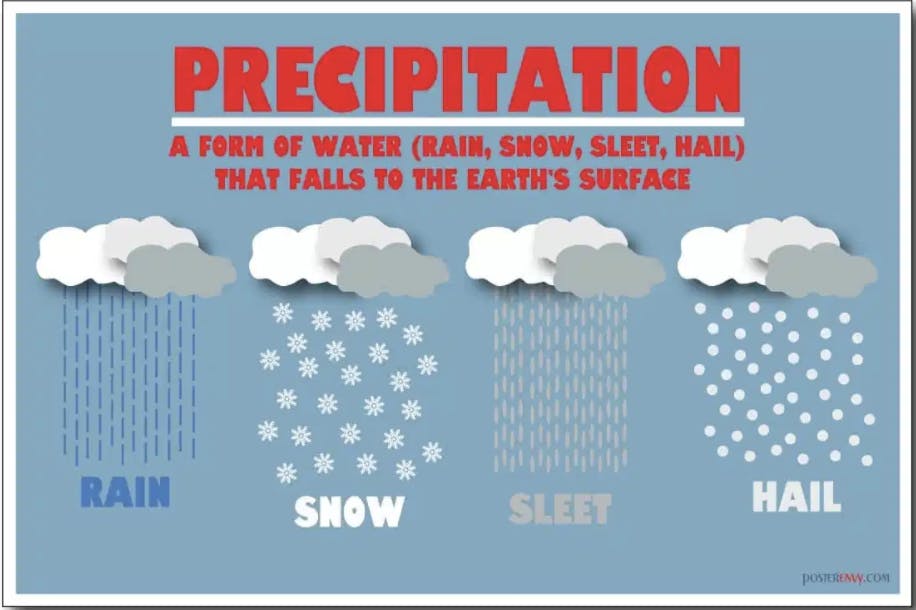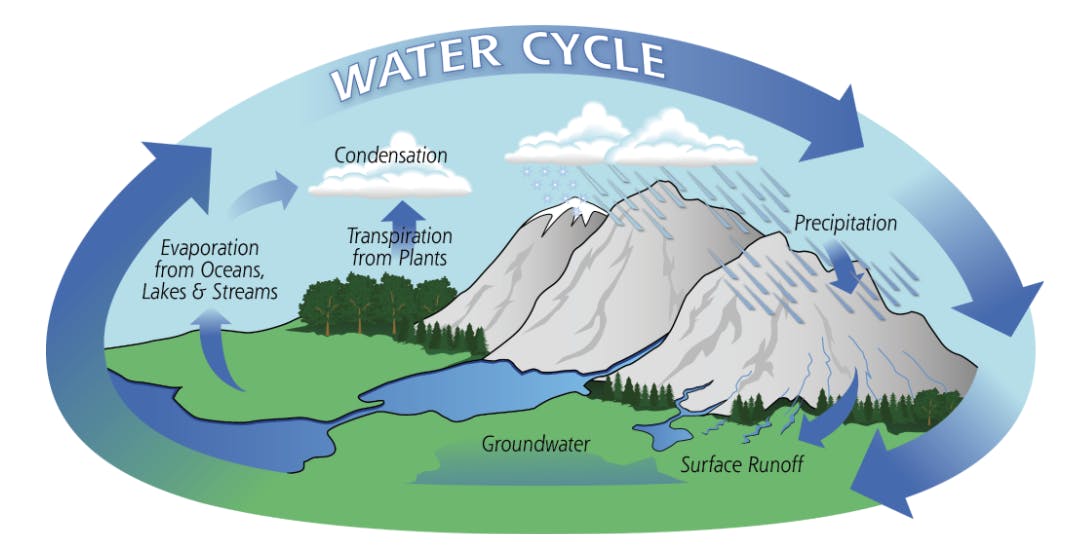TL;DR Science: Rain and Humidity
By Shang Chen
September 01, 2021 · 4 minute read
Earth Science
Environmental Science
Biology
As people around the world are battered by sweltering heat and daily rain storms, this week we’ll take a deep dive into what causes rain to fall and how humidity, temperature, and other factors can impact the chances of precipitation.
The Beginnings of a Storm
Rain begins its life in its harmless fluffy form, more commonly known as clouds. Clouds are made up of collections of evaporated water called water vapor. As water evaporates, it rises into the air, cooling as it gets higher in Earth’s atmosphere. Eventually they reach a point where water vapor begins returning to its liquid form in a process called condensation. These small molecules of water latch onto solid particles in the air which can come from dust, pollen, or other water droplets. The white fluffy clouds we see in the sky are actually collections of water vapor and other particles that join together. However, as these water droplets grow bigger and bigger, they begin to capture more water vapor, causing this accumulation of water to increase in speed. As these droplets get heavier and denser, they begin to start blocking more and more light, contributing to their darker color. After a certain point, these water droplets get too heavy to stay suspended in the air and begin to fall as rain. Depending on the temperature, these water droplets can freeze in the air and fall as other forms of precipitation such as snow, hail, or sleet.

The Water Cycle
As rain falls onto the ground, some of it is absorbed by the earth through plants and soil, and some rain makes its way into water streams which eventually return to the ocean and other large bodies of water. In hotter climates, these bodies of water begin to evaporate creating clouds and starting the cycle all over again. This process of continued evaporation, condensation, and precipitation is known as the water cycle. The water cycle is most efficient in areas that have both high temperatures and large bodies of water. This is why coastal regions near the equator have so much rainfall. On the other hand, deserts, despite their high temperatures, get very infrequent rainfall due to a lack of moisture in the regions.

Humidity
Now that we have covered how rain forms, it’s time to explain what the term humidity is and how it relates to weather patterns across the world. Humidity is defined as the measure of the actual amount of water vapor in the air. Humidity is measured in two ways: absolute and relative. Absolute humidity is simply the grams of water vapor per cubic meter volume of air. Relative humidity is similar but changes depending on the temperature. The reason that relative humidity exists is because warmer air actually holds more moisture than cooler air. This means that in warm weather, the relative humidity will be higher than in cooler weather, even if the measurable amount of water vapor in the air is the same.
Moving on to how humidity affects precipitation, it may be intuitive to think that when the relative humidity reaches 100%, then rain will follow. However, this is not the case. This is because even if the air is fully saturated with water vapor, there are other factors that impact if rain will fall. The first of these factors is how cool the air is around the cloud formations. If the air is too warm, then water vapor will not condense into water droplets to begin the process of rain formation described above. Once it starts to rain, the humidity will begin to drop as the water vapor from the air is converted into droplets that fall to the ground as rain. Furthermore, as rain falls, the surface temperature of the area will decrease, slowing down the rate that water will evaporate. The combination of decreased humidity and lowered surface temperature is why the weather feels cooler directly after a rainstorm.
TL;DR
Rain is formed when water vapor rises high into the atmosphere and begins to cool, forming water droplets. These droplets begin to collect more and more water vapor until they reach a critical mass and fall from the cloud as rain. Humidity is the measure of water vapor in the air, but 100% humidity does not always equal rain.
Sources:
https://www.smartfog.com/how-rain-and-humidity-connected.html
https://www.quora.com/What-is-the-relation-between-humidity-and-rain
https://scijinks.gov/rain/#:~:text=What%20causes%20rain%3F,fall%20to%20Earth%20as%20rain.
https://www.weather.gov/lmk/humidity
Images:
https://gpm.nasa.gov/education/sites/default/files/article_images/Water-Cycle-Art2A.png
Did you enjoy this article?
About The Author
Shang is a current undergraduate at UC Berkeley studying Economics and Data Science. His hobbies include cooking, hiking, and playing video games. Send him new article recommendations or suggestions at shang@sciteens.org